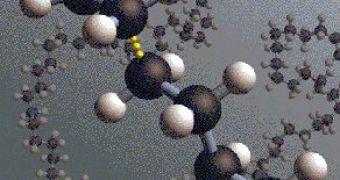Plastics are made of semisynthetic polymerization products composed of organic condensation or addition polymers and may contain other substances to improve performance or economics. Their widespread use made them indispensable in almost all industry areas.
There are methods by which plastics can be broken back down to a feedstock state, but so far none of them can break down the long chains of molecules that make up the millions of pounds of polymer materials that are trashed each year, to fully reuse the basic components.
Now, a team of Japanese researchers at the Yamaguchi University developed a new approach, much like the one used to recycle aluminum cans, glass containers and scrap steel, capable of de-polymerizing polyamide plastics, like nylon and even Kevlar.
The process of de-polymerizing can eliminate current problems of polymer recycling that produces new plastics less pure than the original, almost like the degradation of consecutive copies. The end products of this new method retain their original purity, thus the characteristics that make them popular in many industry areas.
Akio Kamimura and Shigehiro Yamamoto, the inventors of this technique, said that "This is the first example of the use of ionic liquids for effective de-polymerization of polymeric materials and will open a new field in ionic liquid chemistry, as well as plastic recycling."
An ionic liquid is a liquid that contains essentially only ions. Some ionic liquids, such as ethylammonium nitrate, are in a dynamic equilibrium where at any time more than 99.99% of the liquid is made up of ionic rather than molecular species.
Due to their non-volatility, effectively eliminating a major pathway for environmental release and contamination, ionic liquids have been considered as having a low impact on the environment and human health and thus they have been recognized as solvents for green chemistry.
For now, the new recycling technique is still in the phase of laboratory testing, but the inventors hope to come up with commercial applications in a few years.

 14 DAY TRIAL //
14 DAY TRIAL //